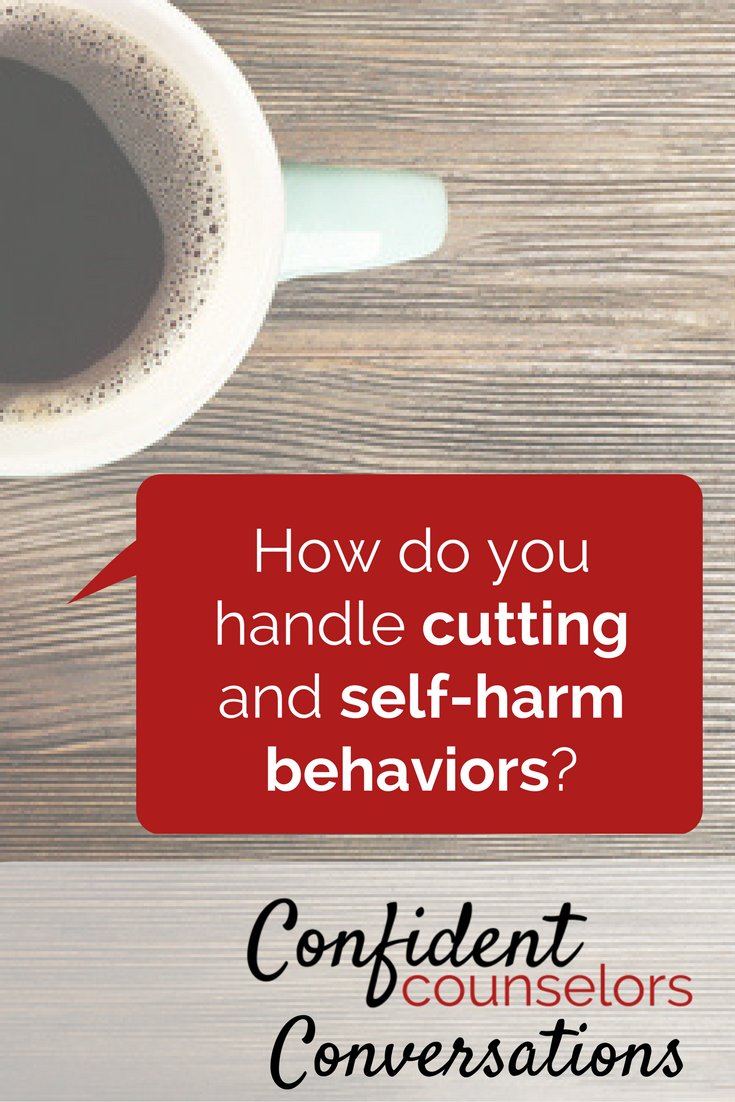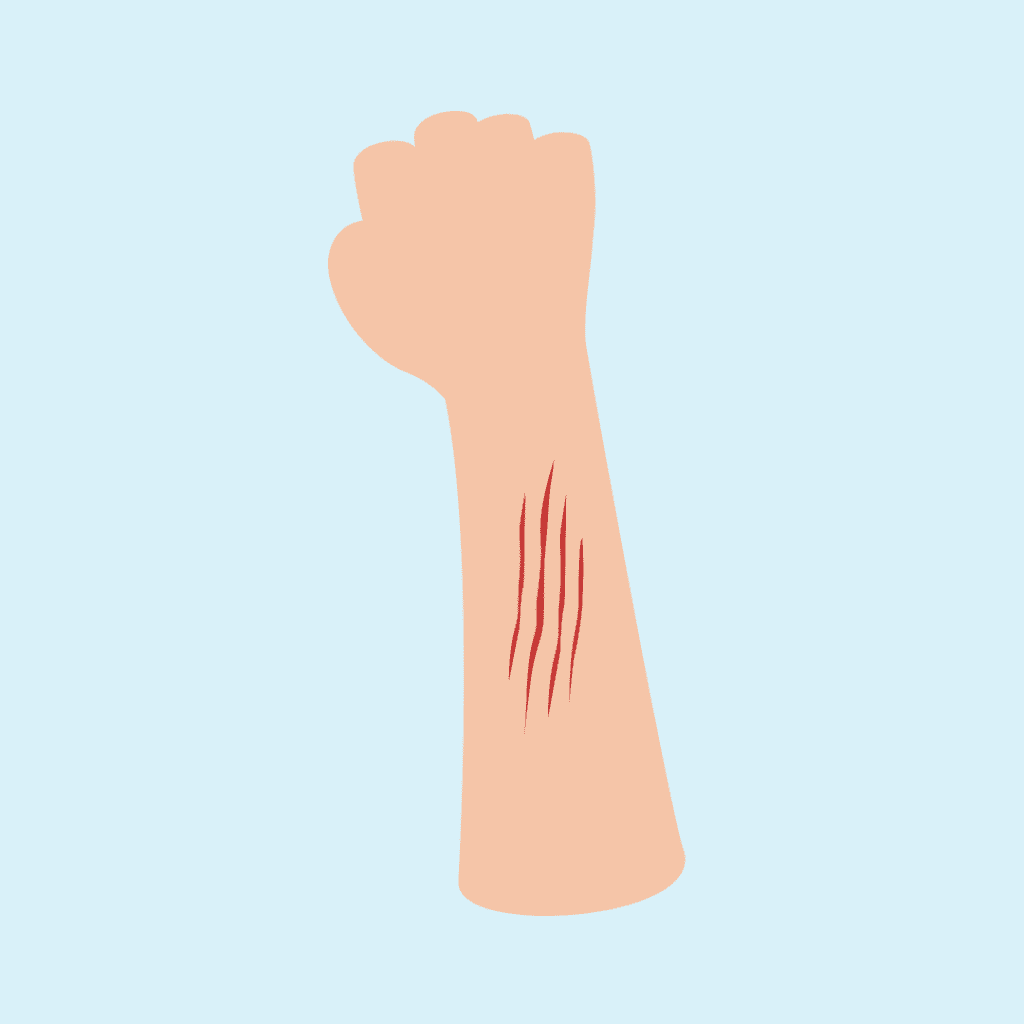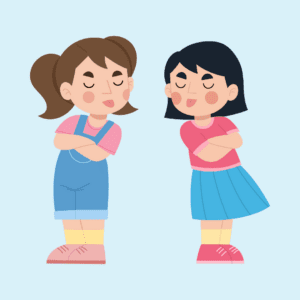Addressing Cutting Behaviors
Cutting and other non-suicidal self-harm behaviors are signs of situations in need of immediate attention. School counselors are often among the first to become aware of these behaviors and have an opportunity to respond quickly and effectively. Robyn from Mental Fills, Laura from Social Emotional Workshop, and Carol Miller, The Middle School Counselor share some tips from their experiences. Please check out the links at the bottom of this post for additional best practices.
[su_divider top=”no” style=”double” divider_color=”#5d94cd” link_color=”#000000″]
Ensure Safety, Remain Nonjudgemental
 Cutting behaviors are maladaptive coping strategies to emotional distress. Although suicidal thoughts may be coupled with self-harm, typically the cutting is more an attempt to release disturbing and overwhelming feelings. In all cases, complete a suicide assessment as a first approach, followed by a safety assessment.
Cutting behaviors are maladaptive coping strategies to emotional distress. Although suicidal thoughts may be coupled with self-harm, typically the cutting is more an attempt to release disturbing and overwhelming feelings. In all cases, complete a suicide assessment as a first approach, followed by a safety assessment.
Individuals that use cutting as a strategy to manage their emotions may have been exposed to abuse or neglect. Ensure their home and school environment are safe. Complete mandatory reports as necessary.
Once you are certain of their safety, work on a plan to address the cutting behaviors. Help identify the trigger, the purpose behind their cutting, validate the emotions related to the trigger, and over time teach coping strategies using DBT skills training, including mindfulness, distress tolerance, emotional regulation, and interpersonal relationship skills.
Helpful assessment questions asked in a neutral nonjudgmental manner include:
- What triggered you to cut?
- What did you use to cut yourself?
- Where did you cut yourself?
- Were you attempting to die or relieve your emotional pain?
- What were you hoping would happen when you cut on yourself?
- Where were you when you cut yourself? Who else was nearby? What would have happened if they walked in the room? Were you secretly hoping someone would stop you?
- If your scars could talk what would they say you were feeling at the time?
- What kept you from cutting deeper?
- What other body parts do you cut? Do you hide it? If so, why?
- Where do you keep the cutting tool? Would you be willing to hand it in/throw it away?
- Do you want to stop cutting? What is your understanding of what could happen if you keep cutting?
- What other ways have you harmed yourself (i.e. burning, hair pulling, punching, pinching…)?
- How often do you cut yourself?
- Have you ever cut yourself that you required stitches?
- How long have you gone without cutting yourself? What do you attribute to this?
- What would happen if you used your words to share your feelings instead of cutting?
- Who in your life takes you serious? Listens to you? Supports you?
- Would you be open to trying another strategy to cope with the emotional pain (i.e. ice cubes, draw with a red marker on your skin, exercise, call a crisis line)?
A crisis plan for self-harm can be found here.
[su_divider top=”no” style=”double” divider_color=”#5d94cd” link_color=”#000000″]
Cutting Can Be Addictive
 Often a student cuts when emotionally overwhelmed. That emotion could be anger, anxiety, stress, sadness. Cutting is a (maladaptive) way to cope with those feelings. If it was that simple, we could teach any replacement behavior, build up coping skills, and extinguish it. An important part to understand about self-injurious behaviors, like cutting, is that they can be addictive. When a student cuts, feel-good endorphins rush through their bodies. That student just took the edge off those overwhelming emotions. And they will want to again in the future.
Often a student cuts when emotionally overwhelmed. That emotion could be anger, anxiety, stress, sadness. Cutting is a (maladaptive) way to cope with those feelings. If it was that simple, we could teach any replacement behavior, build up coping skills, and extinguish it. An important part to understand about self-injurious behaviors, like cutting, is that they can be addictive. When a student cuts, feel-good endorphins rush through their bodies. That student just took the edge off those overwhelming emotions. And they will want to again in the future.
My approach to cutting behaviors definitely involves addressing the triggers that cause it, but also the endorphin release that maintains the behavior. How do you replace a behavior that makes something bad feel better? When they get the urge to cut, I have had students snap a rubber band on their wrist as an immediate replacement, while we work on more adaptive behaviors. We continue to work on managing strong emotions with mindfulness and break passes.
Cutting is a significant sign of greater mental health issues, poor coping skills, and potential trauma. Make sure you are consulting with your school team, outside professionals, and the student’s family.
-Laura from Social Emotional Workshop
[su_divider top=”no” style=”double” divider_color=”#5d94cd” link_color=”#000000″]
Support Friends and Bystanders
 I find most students who cut do so, not because they are suicidal, but because they are seeking a release from the sadness and pain they are feeling inside. Their troubles are seeking a way of asking for help that they have no words for. Most students are brought to me by their friends and it is scary for those who witness from afar. There are two things in these situations that need to be addressed. First is the cutting, and the second is taking care of those who are scared by seeing their friends engaging in self-destructive behaviors. It is important to note, that these situations should be addressed separately through individual counseling.
I find most students who cut do so, not because they are suicidal, but because they are seeking a release from the sadness and pain they are feeling inside. Their troubles are seeking a way of asking for help that they have no words for. Most students are brought to me by their friends and it is scary for those who witness from afar. There are two things in these situations that need to be addressed. First is the cutting, and the second is taking care of those who are scared by seeing their friends engaging in self-destructive behaviors. It is important to note, that these situations should be addressed separately through individual counseling.
For those that self-injure, I often talk about replacement behaviors. Ice cubes on wrists or magic markers are replacements for several of the sensations students seek. Talking about negative thoughts and replacements is another important strategy.
For those friends who are concerned, we talk about “what to do if” situations. It’s important to make sure that students realize what course of action should happen if a friend calls them about a dangerous situation. Arming them with the tools they need to make good decisions can be life-saving.
– Carol Miller – The Middle School Counselor
[su_divider top=”no” style=”double” divider_color=”#5d94cd” link_color=”#000000″]
Best Practices – Cutting Behaviors
Cornell – Self Injury Recovery Research and Resources
National Alliance on Mental Illness
Child Mind- What Drives Self-Injury and How to Treat It.







